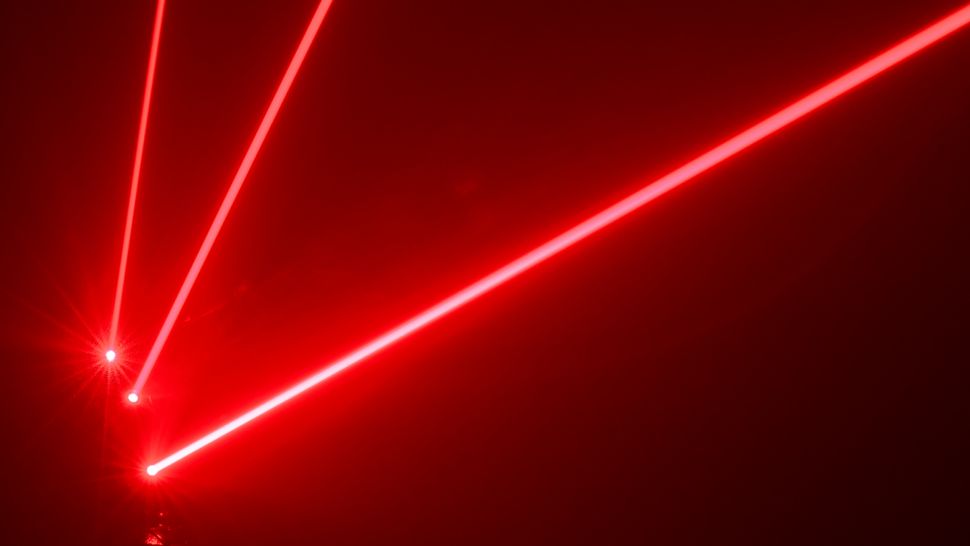DARPA's military-grade 'quantum laser' will use entangled photons to outshine conventional laser beams
By Owen Hughes published June 12, 2024
Prototype quantum photonic-dimer laser uses entanglement to bind photons and deliver a powerful beam of concentrated light that can shine through adverse weather like thick fog.

Three red laser beams shooting out from the bottom left-hand corner
(Image credit: Chris Rogers/Getty Images)
Researchers are developing a new, military-grade "quantum laser" that can cut through fog and operate across long distances.
The U.S. Defense Advanced Research Projects Agency (DARPA) has awarded a $1 million grant to scientists building a prototype "quantum photonic-dimer laser" that uses quantum entanglement to "glue" light particles together and generate a highly concentrated laser beam.
Lasers play a crucial role in military operations and are used in everything from satellite communications and targeting technology to mapping and tracking systems like lidar (light detection and ranging).
Conventional lasers work by stimulating electrons in atoms to oscillate in unison. When these electrons move from a high-energy state to a low-energy state, they release a form of light called "coherent light" — light with uniform wavelength and phase. As this light is bounced between mirrors inside the laser device, it is refined into a concentrated laser beam.
But by using entangled photons, the quantum photonic-dimer laser can maintain precision and strength over greater distances and in adverse conditions, the scientists said in a statement. Quantum lasers could therefore provide better performance for military applications like surveillance and secure communications in harsh environments.
More:
https://www.livescience.com/technology/engineering/darpas-military-grade-quantum-laser-will-use-entangled-photons-to-outshine-conventional-laser-beams
